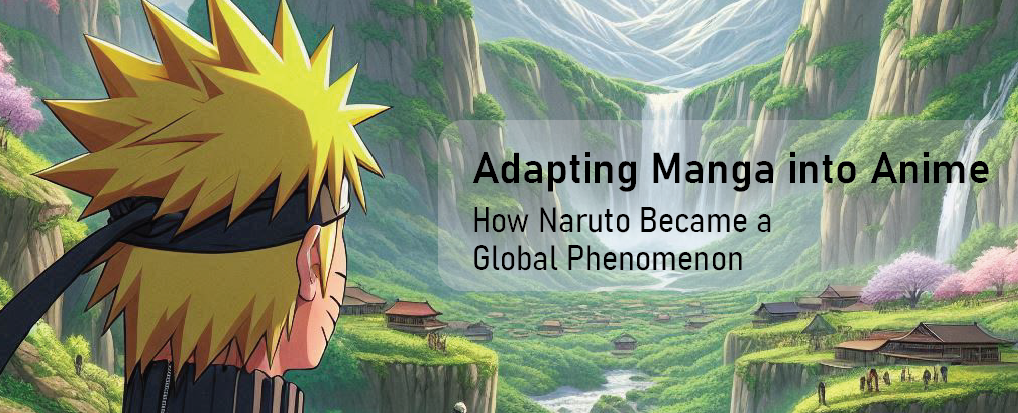Key Takeaways:
- A concept similar to Naruto was first materialized in a one-shot in 1997, two years before Naruto was published in Shonen Jump.
- Naruto has sold over 250 million copies of the manga and has an average rating of 8.0–8.5 from millions of anime viewers globally.
- The adaptation of Naruto into an anime allowed the growth of the fanbase, reaching overseas viewers.
- The effective translation of the anime allowed the successful transmission of Naruto’s core values like friendship, understanding, and perseverance.
Table of Contents:
- The Journey from Adapting Manga into Anime: Naruto’s Transformation
- Naruto’s Lasting Legacy and Cultural Impact
- The Role of Localization in Anime’s Global Reach
Naruto is a household name in many countries worldwide. There is an entire generation who grew up reading the manga and watching the anime adaptation. Naruto is so popular that even those who have never read or watched Naruto can identify him among other anime protagonists. Who could miss the orange jumpsuit, yellow hair, Hidden Leaf headband, and three pairs of whiskers? In this article, we will be looking at Naruto’s beginnings as a manga series, its adaptation and reception as an anime, and its impact on children, teens, and adults alike. Sounds interesting? Believe it!
The Journey from Adapting Manga into Anime: Naruto’s Transformation
Let us take a brief walk through Naruto as a manga and as an anime.
The Manga
Masashi Kishimoto, writer and illustrator of Naruto, was an avid reader of manga ever since his childhood. Fascinated by the art of the film Akira (1988), he started delving into the artworks of Akira author Katsuhiro Otomo and Dragon Ball creator Akira Toriyama. Kishimoto mentions the series Dragon Ball, the film The Matrix (1999), and the manga Sasuke as the influences that helped him piece together his own masterpiece, Naruto.
The Naruto success story begins with its publication in 1999. Its conception in 1997 as a one-shot published in Akamaru Jump by the major publishing company Shueisha Inc. laid the foundations for the ninja-themed Naruto we know today. Shueisha later released Naruto as part of the Shonen Jump magazine, a weekly manga anthology in Japan. Composed of two parts, it was serialized in the magazine until 2014. The English version of the manga by Viz Media was first released in 2003. From then, it became officially available to readers in America.
The latest official data shows that more than 250 million print copies of the manga have been sold globally. Although Naruto Uzumaki’s story has concluded with Naruto: Shippuden, Masashi Kishimoto, together with Ukyo Kodachi, is working on the spin-off series following Naruto’s son, Boruto, guaranteeing the further growth of the fanbase.
The Anime
The anime adaptation of Naruto first aired in Japan through Studio Pierrot. With more than 200 episodes, the TV series spanned from October 2002 to February 2007. In the United States, it was aired via Toonami in 2005. Since then, it has been localized and made available to different parts of the world. But this was only for part I. The anime adaptation of part II, titled Naruto: Shippuden, started in February 2007 and ended in March 2017. 10 known movies have also been produced based on Naruto—11 if you count Boruto: Naruto the Movie.
Adapting manga into anime can be quite challenging, especially when the studio has goals of making it a global hit. Megan Peters from Comicbook writes that Studio Pierrot also thought of the conditions that could make Naruto a hit overseas. There were restrictions to be considered to ensure the show’s longevity that would prompt creators to tone down violence and explicit scenes, for example. This, though, was at the cost of making the anime rather dull compared to the manga. Thankfully, Studio Pierrot stayed faithful to the manga and its themes. This, without a doubt, has made Naruto an icon in the anime industry to this day. It is then up to providers of anime localization services, like CCC, to translate these themes according to the context of each country to make it an absolute hit.
The series has been enjoyed by generations of anime watchers since its adaptation. Naruto has earned an average of 8.4 out of 10 stars from more than 130 thousand users and 8.7 stars for Naruto: Shippuden from almost 200 thousand users, all according to IMDb. And those ratings do not even account for the casual Naruto enjoyers who watch on anime streaming sites, DVDs, and TV. To give some more data, both Naruto and Naruto: Shippuden also scored an average of 8.00 and 80.27, respectively, on My Anime List, from the ratings of more than 1.5 million users.
Naruto’s Lasting Legacy and Cultural Impact
It goes without saying that Naruto has been an influence on many people. Naruto continues to be a staple in comic and anime conventions. And who could ever forget the viral “Storm Area 51” meme in 2019 which put the Naruto run in the spotlight?
But what are some key factors that contributed to Naruto’s global impact? What is Naruto’s legacy and impact on its viewers?
The Ninja Way: Teachings from Naruto
Naruto imparts universal values and teachings which also serve as reminders to all audiences. The wide distribution and localization have allowed the successful communication of all of these. Apart from its exciting fight scenes and its being a window to Japanese history and culture, the teachings also contribute to what makes Naruto so timeless.
- The Will of Fire: The Will of Fire is the guiding principle of the Hidden Leaf Village. It is to treat everyone as family and to look after their safety. This emphasizes the value of community and the need to support each other to maintain peace and understanding.
- “Pain allows people to grow, and how you grow is up to you”: Naruto has a lot of quotable quotes and Jiraiya is spot on with this one. In this scenario, he talks about how pain hurts people and causes them to hurt others. But he makes it a point that knowing pain also means knowing how others may feel about it. Most importantly, he gives others the agency to decide how they make use of their pain.
- Supporting and looking out for friends: Friendship is a recurring highlight in Naruto. Kakashi tells Team 7 that abandoning orders makes one trash, but abandoning their teammates makes them much, much worse. This goes back to valuing community. It tells us that our duty to the well-being of the people we care about is more important than following cold authority.
- The pursuit of being a Hokage: Naruto’s pursuit of greatness stems from his desire for recognition and approval. As in many societies, though people may believe in a philosophy similar to the Will of Fire, there are people like Naruto who are treated differently. But Naruto teaches us to strive for greatness and to keep reaching for our dreams. He reminds us that we must believe in ourselves even if the world does not.
- Empathy makes understanding: Because of the hurt and neglect Naruto has gone through, he knows pain like the back of his hand. This allows him to empathize with even the most cruel characters in Naruto. Made with rich backstories, all the characters of Naruto let us understand that much of what we are now is built from a long, complicated, and often painful past.
Peace through communication: By understanding others and where they are coming from, we can promote communication and build a society that veers away from violence. This is Naruto’s biggest potential: promoting peace through dialog.
Naruto’s Legacy
Naruto is more than memorizing the hand seals and doing the anime run. It is more than attending comic and anime conventions dressed up like your favorite ninjas. It is more than the fight scenes, the world-building, and the relatable characters. Naruto has created a community that knows the value of friendship, that shares a love for Japanese culture, and that is set on pursuing their goals with confidence in themselves. Until today, Naruto continues to be the doorstep that leads to the halls of discovering anime, manga, and other aspects of Japanese and East Asian history and culture. Naruto remains a classic example of good shonen anime, and the love for the show, its characters, and its principles will always be here to stay. Believe it!
The Role of Localization in Anime’s Global Reach
There are many things to consider in adapting manga into anime. But the success of anime adaptations like Naruto encourages our studios and distributors to push forward.
Localization is crucial in the distribution of content overseas. The quality of the anime localization services can mean the difference between a flop and a smash hit. This is especially true in anime as adapting manga into anime already constitutes compressions and reductions from the manga.
CCC’s anime subtitling services guarantee localization that is faithful to the source material so your anime can connect to your target audience. With experts in multiple languages, we can bring your anime to broader audiences.
Together, let us forge meaningful connections. Contact us today!









